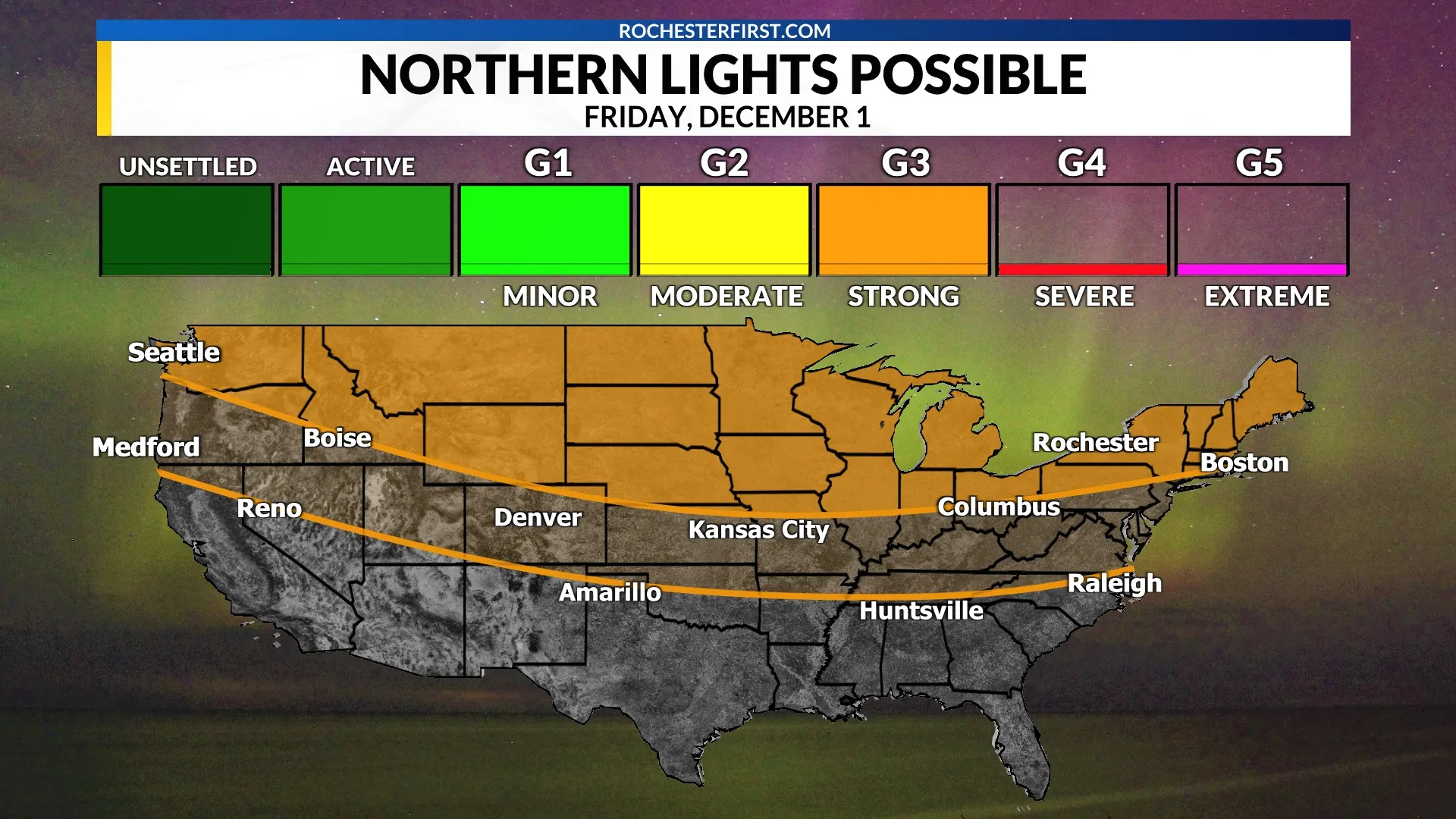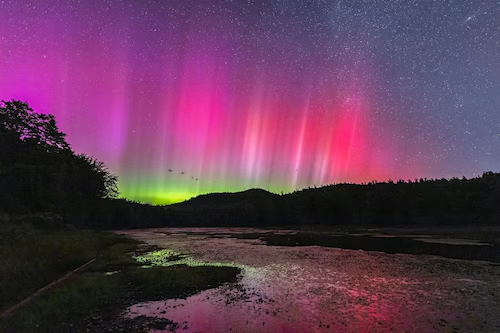Exciting News for Northern Lights Enthusiasts: The Sun’s Activity Holds the Key This Winter
For those who have always dreamed of witnessing the mesmerizing Northern Lights, the good news this winter is that you may be in luck. The key to this celestial spectacle isn’t just clear skies or cold temperatures, but something far more cosmic: the activity of the Sun. Recent solar activity suggests that the Northern Lights, or Aurora Borealis, could be particularly spectacular this winter season.
The Connection Between Solar Activity and the Northern Lights
The Northern Lights are a stunning natural light display caused by charged particles from the Sun colliding with Earth’s magnetic field. These solar particles travel across vast distances through space and, when they reach Earth, interact with gases like oxygen and nitrogen in the upper atmosphere. This interaction releases energy in the form of light, creating the familiar shimmering curtains of green, purple, and pink hues.
The intensity and frequency of these auroral displays depend largely on the Sun’s activity, which follows an 11-year solar cycle. This cycle is marked by periods of increased and decreased solar activity, including solar flares and coronal mass ejections (CMEs). During solar maximum, when the Sun is most active, the chances of witnessing a spectacular aurora increase dramatically.
Why This Winter Could Be Special
We are currently approaching the peak of the Sun’s 11-year solar cycle, expected to occur around 2025. This means that solar activity is on the rise, which could result in more frequent and intense auroral displays in the coming winter months. Solar flares and CMEs are expected to become more frequent, sending higher quantities of solar particles toward Earth. When these particles interact with Earth’s magnetic field, they create auroras visible in locations farther from the poles than usual, including parts of Canada, the northern United States, and even parts of Europe and Asia.
Solar cycles vary in intensity, so not every solar maximum results in equally spectacular auroral displays. However, experts predict that this upcoming solar cycle will be particularly strong, making the Northern Lights even more vibrant and visible to a wider range of locations. For aurora enthusiasts, this is a season to look forward to.
What to Expect in Terms of Visibility
While the most famous locations for viewing the Northern Lights are within the Arctic Circle, such as Tromsø in Norway, Reykjavik in Iceland, and the Yukon in Canada, solar activity can push the auroras farther south. When solar activity peaks, there’s a possibility of seeing the lights even in parts of Alaska, northern Europe, and the northern United States.
The most vivid displays typically occur in areas with little light pollution and clear skies. The best time to view the Northern Lights is generally from late September to early April, with the darkest months of winter (December through February) being the most optimal. With increased solar activity, the auroras may be visible for more extended periods or at lower latitudes than usual.
How to Increase Your Chances of Seeing the Northern Lights
While solar activity plays a major role in the appearance of the Northern Lights, there are other factors that can affect visibility. Here are some tips to increase your chances of experiencing this magical phenomenon:
1. Choose the Right Location: Opt for places within or near the auroral oval, which is the region around the magnetic poles where auroras are most commonly visible. While areas within the Arctic Circle are ideal, you can also look for regions closer to 40 to 50 degrees latitude during periods of intense solar activity.
2. Time Your Visit: The best time to catch the Northern Lights is during the darkest part of winter. Aim for a period when the moon is new or not too bright, as the light from a full moon can overpower the auroras. Look for solar storms or heightened solar activity reports, as these will indicate increased chances of auroral displays.
3. Monitor Solar Activity: Tools such as the NOAA Space Weather Prediction Center or apps dedicated to aurora forecasts can help you stay updated on solar activity and predict when the Northern Lights are most likely to appear. If a significant solar flare or CME occurs, you can time your trip accordingly.
4. Patience is Key: The Northern Lights are a natural phenomenon, and even during periods of high solar activity, there’s no guarantee of a display. Be prepared to wait, as the auroras can appear unpredictably and for only short windows of time. Having a flexible schedule can help you make the most of this experience.
The Science Behind the Show: Solar Flares and CMEs
Solar flares are sudden bursts of energy from the Sun’s surface, while CMEs are massive waves of solar wind and magnetic fields rising from the Sun’s corona. When these bursts of energy reach Earth, they disturb the planet’s magnetosphere and cause it to “open up.” This allows solar particles to flow into Earth’s atmosphere, exciting the gases and causing them to emit light. The more intense the solar event, the more vivid and widespread the auroras.
During this period of increased solar activity, scientists anticipate more solar storms, which may lead to more dramatic and widespread auroras. The increased frequency of solar flares and CMEs could also result in auroras being visible further south than usual, providing a rare opportunity for those in lower latitudes to experience this awe-inspiring phenomenon.
Conclusion
This winter promises to be an exciting time for those hoping to witness the Northern Lights. With the Sun’s solar activity on the rise, the chances of seeing auroras are higher than ever before. By timing your trip to areas near the auroral oval and staying updated on solar forecasts, you can increase your odds of experiencing one of nature’s most captivating shows.
Whether you’re an experienced aurora chaser or a first time viewer, the upcoming winter season is a golden opportunity to see the Northern Lights in all their glory. Prepare to be amazed by the spectacular light show that nature and the Sun have in store for us this year.



